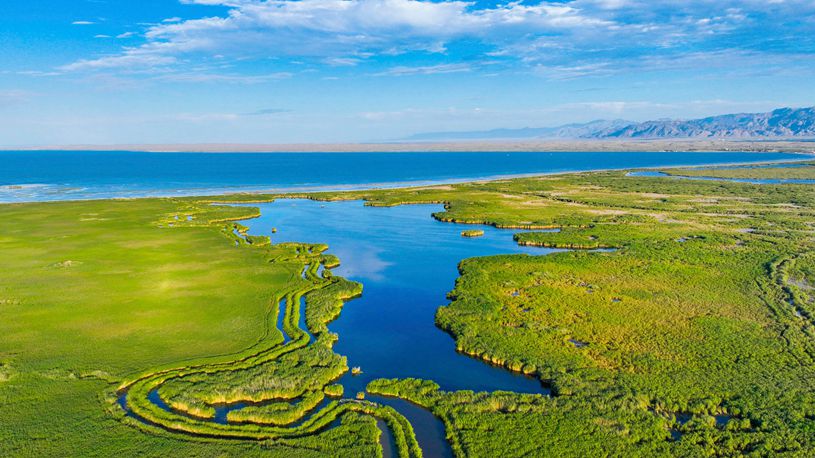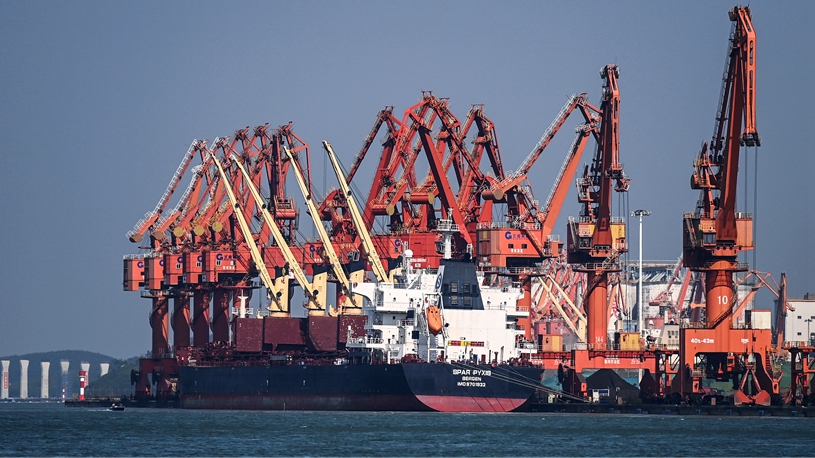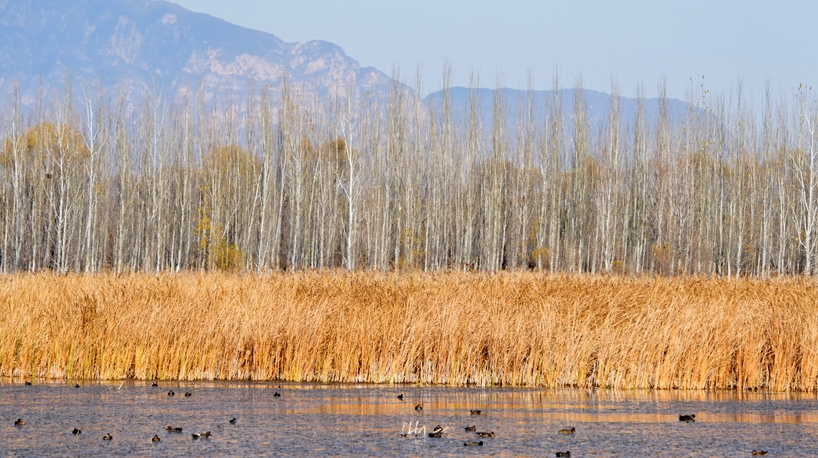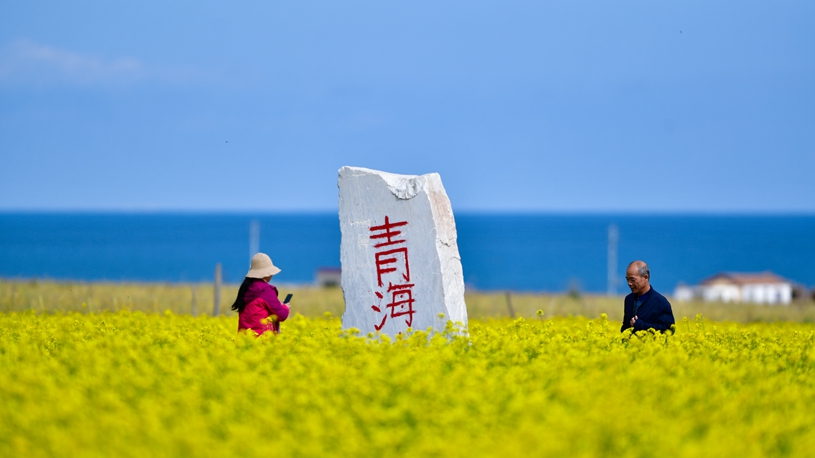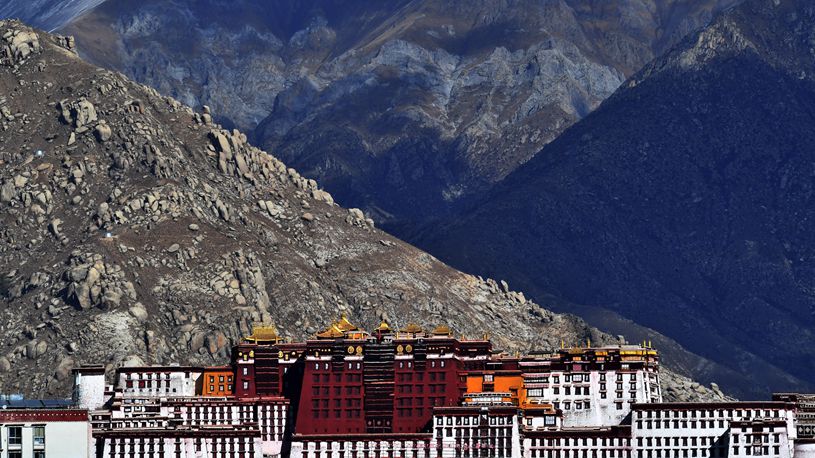
People enjoy the sunset view at the Qingshan riverside park in Qingshan District of Wuhan, central China's Hubei Province, Nov. 8, 2022. (Xinhua/Yao Qilin)
by Xinhua Writers Yue Wenwan and Yao Yuan
WUHAN, Nov. 10 (Xinhua) -- Retired steel worker Zhao Zhigang found a new hobby at the site of a former steel and machinery port in central China's Wuhan -- bird photography.
In front of his camera, waterbirds flit across the river to rest on treetops. Behind him, joggers, skaters, square dancers and volleyball players mellow out at the Qingshan riverside park.
In Zhao's memory, this area was hardly a place for leisure. In the 1950s, Wuhan Iron and Steel Group settled in the Qingshan district, making the city China's second-largest steel producer at the time. For many years, the Qingshan riverside had over 20 wharves for the handling of cargo ships and heavy-duty trucks carrying steel, chemicals and other industrial output of the "city of steel."
"I didn't want to walk close to the river before. The bumpy roads were dusty on sunny days and muddy on rainy days," the 70-year-old said.
With the closure of wharves and remediation of the environment over the past 10 years, some riverfront areas in Qingshan were transformed into a park, while more parks are under construction in the area. Now it is a popular leisure site for local residents as well as waterfowl.
Located at the confluence of the Yangtze River and its longest tributary the Hanjiang River, Wuhan is home to more than 13 million permanent residents. It is China's fourth largest automobile production base, where an average of 5,000 cars come off the production line and are shipped to the rest of the world every day.
But it is less known that the city also boasts about 162,000 hectares of wetlands, accounting for 18.9 percent of its total area. It is a key point along the East Asian-Australasian Flyway, the world's greatest flyway for migratory birds. At its peak, the city's Chenhu Lake accommodates nearly 100,000 migratory birds.

Migratory birds are seen in Chenhu Lake Wetland Nature Reserve in Wuhan, capital of central China's Hubei Province, Aug. 4, 2022. (Xinhua/Wu Zhizun)
Between 2017 and 2021, Wuhan invested 965 million yuan (133.7 million U.S. dollars) in wetlands protection and returned 7,000 hectares of fish ponds and farmlands to wetlands. Scheduled to receive the certificate of Wetland City from the Ramsar Convention, it will become the only such city with over 10 million permanent residents worldwide.
China in 1992 became a party to the Ramsar Convention, an intergovernmental agreement dedicated to the conservation and rational use of wetland ecosystems, and China has since stepped up conservation efforts while establishing a legal framework on wetlands. Over the past decade, China has added or restored more than 800,000 hectares of wetlands, according to the National Forestry and Grassland Administration.
Experts say more wetlands, which include most of the natural and artificial water bodies on land, are being integrated into China's fast-growing and densely populated megacities, revealing a changing relationship between big cities and nature as the country highlights the construction of an "ecological civilization."
With a population of over 20 million, Beijing added 11,000 hectares of wetlands from 2016 to 2020, raising its total wetlands area to 58,700 hectares. Meanwhile, the city witnessed more than 3.6 million migratory birds from January to November 2020, according to the Beijing Gardening and Greening Bureau.
Guangdong Province, an economic powerhouse in the south of China, has also seen the rise of urban wetlands. Official statistics revealed that the number of wetland parks in the Pearl River Delta, which houses one of China's biggest city clusters, rose to 123 by the end of 2018 from just three in 2012.
Guangdong launched a campaign in 2013 to conserve and restore wetlands around cities, and the improved wetland ecosystem has been credited for purifying rivers, mitigating the urban heat island effect and enhancing the region's appeal to investors.
Wuhan, the "city of lakes," stood out as China's first sub-provincial city to pass legislation on wetlands protection, which it did in 2010. Back then, rampant farmland reclamation had weakened the water storage capacity of the city's 166 lakes, and sewage discharge aggravated their eutrophication problem.
"The hardest part was that there was no precedent law to follow. We even debated whether it was illegal for residents to pick up birds' eggs in the wetland reserve," said Xu Yongwen, the then director of Wuhan's wildlife protection department, who drafted the regulations together with the city's legislative body.
Since then, Wuhan has formulated another 12 laws and regulations to extend protection to the city's main rivers and lakes. Such law-based protection is hailed for stabilizing local wetland areas in the past decade.
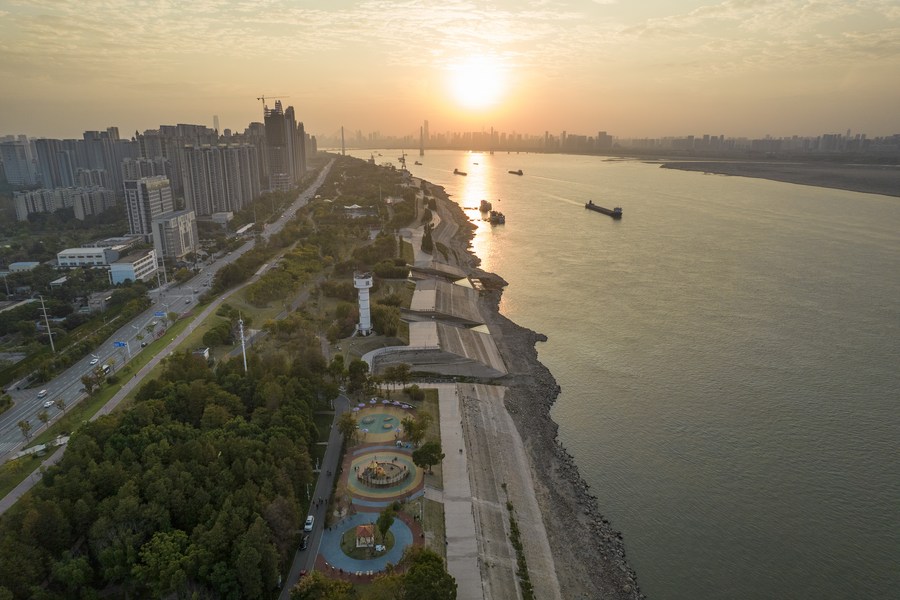
This aerial photo taken on Nov. 8, 2022 shows the Qingshan riverside park in Qingshan District of Wuhan, central China's Hubei Province. (Xinhua/Sun Ruibo)
Some experts believe that Wuhan -- located in central China -- has also explored and developed a sustainable model of city-wetlands coexistence.
Wuhan has demolished docks, houses and business quarters on the riverfront, and rebuilt them into public greenbelts. Just like Qingshan, riverfront areas in Wuhan have become the most popular leisure sites among citizens, who visit such areas for a walk, exercise or wedding banquet.
"Integrating wetlands protection into urban planning is a more sustainable approach. I think this is the most important experience of Wuhan," said Lei Gang, a senior adviser with World Wild Fund for Nature. Lei also praised Wuhan for turning the riverfronts into public green spaces, instead of reserving them as private residences for a small number of people.
Apart from improving the city's environment and citizens' well-being, Lei noted other benefits of well-preserved urban wetlands, including alleviating the urban heat island effect.
"Wuhan used to be one of the top four 'furnace cities' in China, due to its long-lasting and hot summer. Now it is rarely considered by such ratings," Lei said. ■


